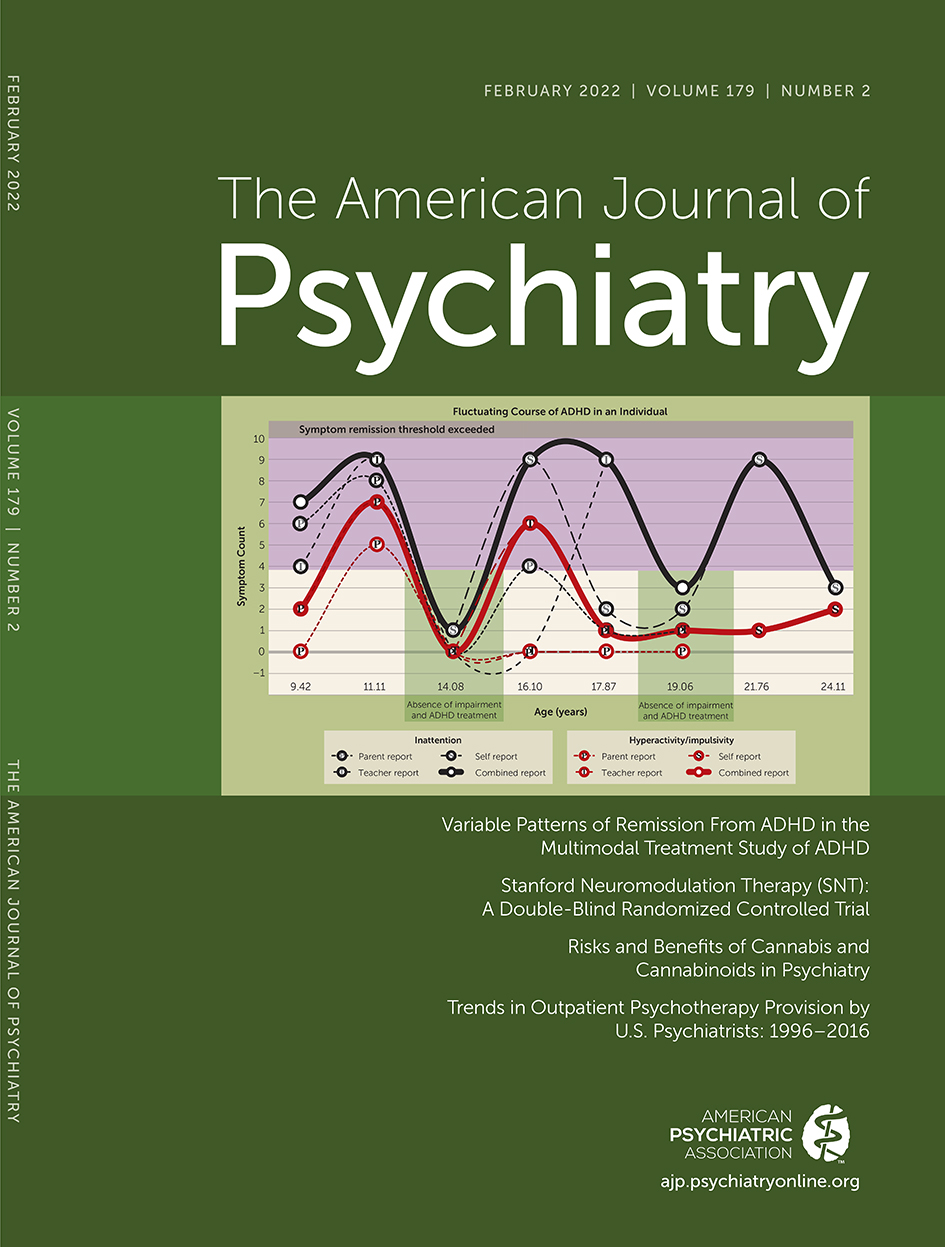Risks and Benefits of Cannabis and Cannabinoids in Psychiatry
Abstract
Objective:
The United States is in the midst of rapidly changing laws regarding cannabis. The increasing availability of cannabis for recreational and medical use requires that mental health clinicians be knowledgeable about evidence to be considered when counseling both patients and colleagues. In this review, the authors outline the evidence from randomized double-blind placebo-controlled trials for therapeutic use of cannabinoids for specific medical conditions and the potential side effects associated with acute and chronic cannabis use.
Methods:
Searches of PubMed and PsycInfo were conducted for articles published through July 2021 reporting on “cannabis” or “cannabinoids” or “medicinal cannabis.” Additional articles were identified from the reference lists of published reviews. Articles that did not contain the terms “clinical trial” or “therapy” in the title or abstract were not reviewed. A total of 4,431 articles were screened, and 841 articles that met criteria for inclusion were reviewed by two or more authors.
Results:
There are currently no psychiatric indications approved by the U.S. Food and Drug Administration (FDA) for cannabinoids, and there is limited evidence supporting the therapeutic use of cannabinoids for treatment of psychiatric disorders. To date, evidence supporting cannabinoid prescription beyond the FDA indications is strongest for the management of pain and spasticity.
Conclusions:
As cannabinoids become more available, the need for an evidence base adequately evaluating their safety and efficacy is increasingly important. There is considerable evidence that cannabinoids have a potential for harm in vulnerable populations such as adolescents and those with psychotic disorders. The current evidence base is insufficient to support the prescription of cannabinoids for the treatment of psychiatric disorders.



